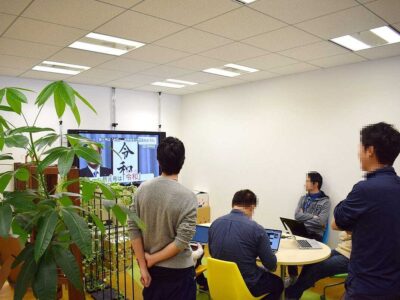
Picture the U.S. economy as an elaborate symphony, a complex composition performed by an orchestra of diverse sectors, each playing a unique yet interconnected role. The conductor, representing the government and policy makers, must lead this orchestra, balancing the soft notes of economic downturns with the crescendos of growth, ensuring that the performance is harmonious and resonant. This metaphorical perspective invites us to explore the U.S. economy not just as a series of data points and fiscal policies but as a living, breathing entity that requires skill, foresight, and creativity to navigate. Let’s delve into how this economic symphony plays out, highlighting the unique aspects of the U.S. economy and the challenges it faces in maintaining harmony. Here is what people like Kavan Choksi think.
The Composition of the Economy
The U.S. economy’s symphony is rich and varied, composed of multiple sectors that contribute to its overall performance. The technology sector plays the lead, driving innovation and setting the tempo for growth. Meanwhile, the manufacturing and service sectors add depth and complexity, supporting the melody with their steady contributions. The energy sector, with its shifts from traditional to renewable sources, adds a dynamic range, reflecting the economy’s adaptability and environmental awareness. Together, these sectors perform a piece that is ever-evolving, responding to global trends and internal dynamics.
The Conductor’s Role
In this symphony, the conductor—the government and its policy makers—must ensure that all parts of the orchestra work in harmony. This involves fine-tuning fiscal and monetary policies to manage inflation, unemployment, and growth. The conductor must also anticipate changes in the score, such as technological advancements or shifts in global trade, adapting the performance to maintain economic stability and prosperity. This role requires a delicate balance between allowing the individual sectors the freedom to innovate and intervening when the music risks becoming discordant.
Challenges in the Performance
Maintaining harmony in the U.S. economy’s symphony is no small feat. Income inequality introduces a dissonant note, threatening the overall cohesion of the performance. Environmental concerns demand a transition to a more sustainable composition, requiring sectors to adapt to new rhythms and practices. Globalization introduces external players into the orchestra, adding complexity and competition. Each of these challenges requires careful attention from the conductor to ensure that the performance does not falter.
Innovations and Adaptations
The U.S. economy, like a skilled orchestra, is capable of innovation and adaptation. The digital revolution has introduced new instruments into the ensemble, from blockchain to artificial intelligence, creating opportunities for growth and transformation. The move towards a green economy is like incorporating new themes into the score, reflecting changing societal values and environmental priorities. Through these adaptations, the symphony of the U.S. economy continues to evolve, reflecting the resilience and creativity of its performers.
The Audience’s Role
The audience, comprising consumers, investors, and the global community, plays a critical role in this economic symphony. Their reactions, from investment decisions to consumer behavior, influence the performance’s direction. Their confidence in the economy can bolster the performance, while their concerns can introduce caution. Engaging this audience, ensuring their trust and participation, is crucial for the symphony’s success.
Conclusion
Viewing the U.S. economy as a symphony offers a unique lens through which to understand its complexities and potential. Each sector contributes its melody to the larger performance, guided by the careful direction of policy makers. The challenges faced require not just technical skill but creative vision, ensuring that the economy can adapt and thrive in an ever-changing world. As the U.S. economy continues to perform its intricate symphony, the collective effort of all its participants—conductors, musicians, and audience—will determine the richness and resilience of its melody. In this grand economic performance, harmony is the key to success, reflecting the unity and diversity that drive the U.S. forward.











